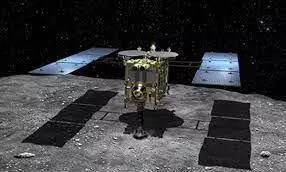
Japan plans asteroid-intercept mission with Hayabusa2 spacecraft
text_fieldsTokyo: Japan Aerospace Exploration Agency (JAXA) is gearing up for an ambitious venture to test technology capable of intercepting and diverting asteroids on a collision course with Earth.
This pioneering mission involves repurposing the Hayabusa2 spacecraft, intending to intercept and alter the trajectory of a fast-moving asteroid headed towards Earth.
Initially launched in December 2014, Hayabusa2 was designed for a mission to rendezvous with the near-Earth asteroid 162173 Ryugu, reaching its destination successfully in June 2018. Over 18 months, the spacecraft extensively studied the asteroid's surface and collected debris samples, which were then brought back to Earth in December 2020.
Scientists are still examining these samples to gain insights into the universe's origins.
Following the successful mission, JAXA engineers announced plans to utilise the remaining xenon propellant to facilitate a fly-by of the asteroid 2002 CC21 in July 2026. Subsequently, in 2031, Hayabusa2 is scheduled for a close encounter with the small, rapidly rotating asteroid 1998 KY26, which shares an orbit with Earth.
Described by JAXA as a nearly spherical object measuring 30 meters in diameter, the target asteroid, 1998 KY26, orbits the sun with a minimum distance from Earth of approximately 374,000 kilometers.
Notably, its ultra-fast rotation of just 10 minutes contributes to a unique physical environment near the asteroid's surface, where centrifugal force exceeds its gravitational pull.
JAXA underscores the necessity of such technology due to the potential threat posed by asteroids of this size, as they have the capacity to collide with Earth every 100 to 1,000 years, potentially causing significant damage. Ground-based observations have limitations, making close proximity examinations, such as those planned for 1998 KY26 and 2002 CC21, pivotal in advancing planetary defense technologies.
The Japanese space agency highlighted the significance of this technology, equating it to the capability required to redirect an asteroid's orbit by colliding with a spacecraft. Therefore, the upcoming fly-by mission holds promise in contributing to planetary defense efforts, emphasising the importance of this innovative approach to safeguard against potential asteroid collisions.























